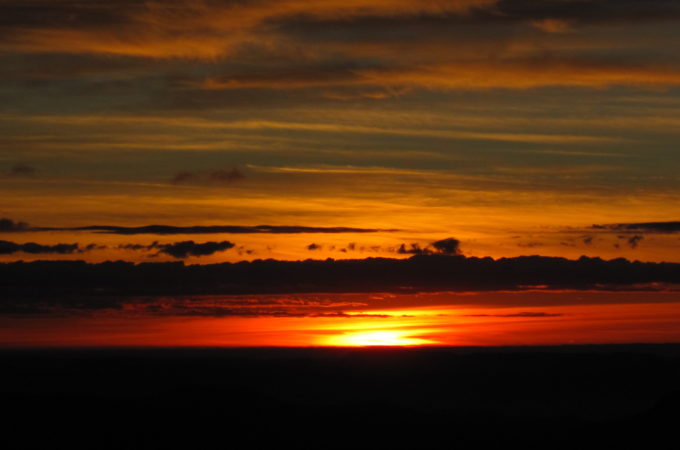The Trinity is a difficult thing to discuss, especially for non-Trinitarian Christians like myself. It seems as though everyone doesn’t understand it: it is a mystery of God. But different people seem to not understand it in very different ways. Some believe it’s one of the most beautiful parts of Christianity while others think it is completely absurd. I hope to clear up a bit of that confusion here.
Why Don’t We Build Cities Anymore?
The Church of Jesus Christ of Latter-day Saints used to have a tradition of building cities.
Under the leadership of Joseph Smith, we built the cities of Kirtland, Far West, and Nauvoo. Brigham Young oversaw the building of almost 300 cities across the Intermountain West. City building slowed dramatically after his death. We haven’t built any new cities in the last hundred years.
Why?
Other Interesting Comments on Fusion
The comments on my submission to the Astral Codex Ten book review contest were highly productive. These are some other interesting comments that did not fit into the previous two categories.
My Responses to Fusion Critics
In the comments on my submission to the Astral Codex Ten book review contest, several people asked me about what I thought about several high-profile critics of fusion. This is a summary of my responses.
My Comments on Other Fusion Startups
In the comments on my submission to the Astral Codex Ten book review contest, several people asked me about what I thought about other fusion startups. This is a summary of my responses.
Book Review of THE FUTURE OF FUSION ENERGY by Jason Parisi and Justin Ball (2019)

This is my submission to the Astral Codex Ten book review contest, where it tied for third place.
Fusion is the power which lights the stars. It is the source of almost all elements heavier than hydrogen in the universe. Wouldn’t it be great if we could use and control this power here on Earth?
I predict that we will get fusion before 2035 (80%) or 2040 (90%). I am a professional plasma physicist, a fusioneer if you will, so I probably know more about this subject than you, but am likely to overemphasize its importance.
The Future of Fusion Energy is the best introduction to fusion that I know. I can confirm that the information it contains is common knowledge among plasma physicists. My parents, who are not physicists, can confirm that it is accessible and interesting to read.
Things are changing fast in fusion right now, and The Future of Fusion Energy is already out of date in some important ways. I will summarize our quest for fusion as it is portrayed in the book, describe what has happened in the field since 2018, and make some predictions about where we go from here. The predictions are my own and do not reflect the opinions of Parisi or Ball.
Effective Altruism Should Seek Less Criticism

This is a submission to the Effective Altruism Criticism Contest, originally posted on the Effective Altruism forum.
Key Ideas:
– Paradigmatic criticism leads to value drift.
– The virtues for individuals, organizations, and societies are not exactly the same.
– Even if you want to have value drift for individuals and for society, you might not want to have value drift for organizations.
– A society with narrowly focused & mostly inflexible organizations, and a culture of individuals moving between them as their values shift, could be better than a society with organizations continually looking for paradigmatic criticism.
– Effective Altruism will probably never be scientific in Kuhn’s sense – and it shouldn’t try to be. It should instead try to be scientific in Lakatos’s sense.
Grid City and Line City

Suppose you are trying to build a new city of 100 blocks. Each block is 1 mile square, has the same density, and can provide enough demand for a rapid transit station. We would like to arrange the blocks in the simplest possible way, and design a rapid transit system for them.
We will try out two different arrangements for the city: Grid City and Line City. Grid City is a 10 by 10 grid. Line City is a 100 by 1 line. How does the transit system work for both of them?
A Comparative Book / Movie Review of LES MISÉRABLES by Victor Hugo (1862)

The musical is a call for liberty for people who are unjustly suffering. The book is a call for compassion for people who are justly suffering.
Climate Science for Fantasy Writers. Part II: Tolkien’s Prevailing Winds

J. R. R. Tolkien is the type specimen for good worldbuilding. He used his expertise in linguistics and medieval poetry to invent new languages, then built a world around those languages, then wrote stories in that world. I have always loved Tolkien and so he should have a place in my discussions of world building. Unfortunately, Middle Earth does not fit the criteria I established in Part I. It does have an atmosphere, but it is not a sphere. The sun and moon are a fruit and a flower from the two trees that sail in ships across the sky. This is not a place where we would expect normal climate science to apply. But the resulting climate ends up mostly making sense. If you understand enough about a few subjects, you often end up inadvertently learning some information about other subjects as well.
